Preparation of Polystyrene Microsphere-Templated Porous Monolith for Wastewater Filtration
Abstract
:1. Introduction
2. Materials and Methods
2.1. Chemicals
2.2. Preparation of Polystyrene Microsphere Template
2.3. Preparation of Microsphere-Templated Porous Monoliths
2.4. Characterization of Microsphere Template and Monoliths
2.5. Experimental Setup for Wastewater Filtration
2.6. Water Quality Analysis
3. Results
3.1. Synthesis of Microsphere Particles as Monolith Templates
3.2. Effect of Template/Monomer Ratio on Pore Distribution
3.3. Template Removal from the Monolith Structure
3.3.1. Morphological Structure Analysis
3.3.2. Chemical Composition Analysis
3.4. Thermal Stability of Microsphere-Templated Porous Monoliths
3.5. Filtration Ability of Microsphere-Templated Porous Monoliths
4. Conclusions
Supplementary Materials
Author Contributions
Funding
Institutional Review Board Statement
Informed Consent Statement
Data Availability Statement
Acknowledgments
Conflicts of Interest
References
- Lynch, K.B.; Ren, J.; Beckner, M.A.; He, C.; Liu, S. Monolith columns for liquid chromatographic separations of intact proteins: A review of recent advances and applications. Anal. Chim. Acta 2019, 1046, 48–68. [Google Scholar] [CrossRef] [PubMed]
- Hess, S.; Niessner, R.; Seidel, M. Quantitative detection of human adenovirus from river water by monolithic adsorption filtration and quantitative PCR. J. Virol. Methods 2021, 292, 114128. [Google Scholar] [CrossRef] [PubMed]
- Almeida, A.M.; Queiroz, J.A.; Sousa, F.; Sousa, A. Minicircle DNA purification: Performance of chromatographic monoliths bearing lysine and cadaverine ligands. J. Chromatogr. B 2019, 1118–1119, 7–16. [Google Scholar] [CrossRef] [PubMed]
- González-González, M.; Mayolo-Deloisa, K.; Rito-Palomares, M. Chapter 5—Recent advances in antibody-based monolith chromatography for therapeutic applications. In Approaches to the Purification, Analysis and Characterization of Antibody-Based Therapeutics; Matte, A., Ed.; Elsevier: Amsterdam, The Netherlands, 2020; pp. 105–116. [Google Scholar] [CrossRef]
- Chan, Y.W.; Kansil, T.; Ongkudon, C.M. Analytical and preparative polymethacrylate monolith fabrication: Effect of porogen content and column size on pore morphology. Colloid Polym. Sci. 2017, 295, 2373–2382. [Google Scholar] [CrossRef]
- Liu, J.; Li, M.; Wang, P.; Liu, K.; Fang, Y. Gel-emulsion templated polymeric monoliths for efficient removal of particulate matters. Chem. Eng. J. 2018, 339, 14–21. [Google Scholar] [CrossRef]
- Wen, L.; Chen, X.; Chen, C.; Yang, R.; Gong, M.; Zhang, Y.; Fu, Q. Ice-templated porous polymer/UiO-66 monolith for Congo Red adsorptive removal. Arab. J. Chem. 2020, 13, 5669–5678. [Google Scholar] [CrossRef]
- Lin, P.; Meng, L.; Huang, Y.; Liu, L. Synthesis of porous polyurea monoliths assisted by centrifugation as adsorbents for water purification. Colloids Surf. A Physicochem. Eng. Asp. 2016, 506, 87–95. [Google Scholar] [CrossRef]
- Szczurek, A.; Fierro, V.; Plyushch, A.; Macutkevic, J.; Kuzhir, P.; Celzard, A. Structure and Electromagnetic Properties of Cellular Glassy Carbon Monoliths with Controlled Cell Size. Materials 2018, 11, 709. [Google Scholar] [CrossRef] [Green Version]
- Juhl, A.C.; Elverfeldt, C.-P.; Hoffmann, F.; Fröba, M. Porous carbon monoliths with pore sizes adjustable between 10 nm and 2 μm prepared by phase separation—New insights in the relation between synthesis composition and resulting structure. Microporous Mesoporous Mater. 2018, 255, 271–280. [Google Scholar] [CrossRef]
- Kamin, Z.; Abdulrahim, N.; Misson, M.; Chiam, C.K.; Sarbatly, R.; Krishnaiah, D.; Bono, A. Use of melt blown polypropylene nanofiber templates to obtain homogenous pore channels in glycidyl methacrylate/ethyl dimethacrylate-based monoliths. Chem. Eng. Commun. 2021, 208, 661–672. [Google Scholar] [CrossRef]
- Gumba, R.E.; Saallah, S.; Misson, M.; Ongkudon, C.M.; Anton, A. Green biodiesel production: A review on feedstock, catalyst, monolithic reactor, and supercritical fluid technology. Biofuel Res. J. 2016, 3, 431–447. [Google Scholar] [CrossRef] [Green Version]
- Shameer, P.M.; Nishath, P.M. Exploration and enhancement on fuel stability of biodiesel: A step forward in the track of global commercialization. In Advanced Biofuels; Woodhead Publishing: Sawston, UK, 2019; pp. 181–213. [Google Scholar]
- Rodrigues, C.L.; Miguez, E.; Tavares, M.I. Development of Polycaprolactone/Poly(Vinyl Alcohol)/Clay Microparticles by Spray Drying. Mater. Sci. Appl. 2016, 7, 575–592. [Google Scholar]
- Ibadat, N.F.; Ongkudon, C.M.; Saallah, S.; Misson, M. Synthesis and Characterization of Polymeric Microspheres Template for a Homogeneous and Porous Monolith. Polymers 2021, 13, 3639. [Google Scholar] [CrossRef] [PubMed]
- Zhang, S.; Xu, L.; Liu, H.; Zhao, Y.; Zhang, Y.; Wang, Q.; Yu, Z.; Liu, Z. A dual template method for synthesizing hollow silica spheres with mesoporous shells. Mater. Lett. 2009, 63, 258–259. [Google Scholar] [CrossRef]
- Misson, M.; Jin, B.; Chen, B.; Zhang, H. Enhancing enzyme stability and metabolic functional ability of β-galactosidase through functionalized polymer nanofiber immobilization. Bioprocess Biosyst. Eng. 2015, 38, 1915–1923. [Google Scholar] [CrossRef] [Green Version]
- Galarneau, A.; Abid, Z.; Said, B.; Didi, Y.; Szymanska, K.; Jarzębski, A.; Tancret, F.; Hamaizi, H.; Bengueddach, A.; Renzo, F.D.; et al. Synthesis and Textural Characterization of Mesoporous and Meso-/Macroporous Silica Monoliths Obtained by Spinodal Decomposition. Inorganic 2016, 4, 9. [Google Scholar] [CrossRef]
- Ali, S.I. Colloidal Templating: A Route towards Controlled Synthesis of Functional Polymeric Nanoparticles. Ph.D. Thesis, Technische Universiteit Eindhoven, Eindhoven, The Netherlands, 2010. [Google Scholar]
- Zhang, Z.; Wang, F.; Ou, J.; Lin, H.; Dong, J.; Zou, H. Preparation of a butyl–silica hybrid monolithic column with a “one-pot” process for bioseparation by capillary liquid chromatography. Anal. Bioanal. Chem. 2013, 405, 2265–2271. [Google Scholar] [CrossRef]
- Malik, A.S.; Dabbs, D.M.; Katz, H.E.; Aksay, I.A. Silica monoliths templated on L3 liquid crystal. Langmuir 2006, 22, 325–331. [Google Scholar] [CrossRef] [PubMed]
- Acquah, C.; Danquah, M.K.; Moy, C.K.S.; Anwar, M.; Ongkudon, C.M. Parametric investigation of polymethacrylate monolith synthesis and stability via thermogravimetric characterisation. Asia-Pac. J. Chem. Eng. 2017, 12, 352–364. [Google Scholar] [CrossRef]
- Pérez, N.; Olaizola, S. Fabrication of 2D Silver Nanostructures from a Polystyrene Opal; SPIE: Bellingham, WA, USA, 2006; Volume 6321. [Google Scholar]
- Anceschi, A.; Binello, A.; Caldera, F.; Trotta, F.; Zanetti, M. Preparation of Microspheres and Monolithic Microporous Carbons from the Pyrolysis of Template-Free Hyper-Crosslinked Oligosaccharides Polymer. Molecules 2020, 25, 3034. [Google Scholar] [CrossRef]
- Danaei, M.; Dehghankhold, M.; Ataei, S.; Hasanzadeh Davarani, F.; Javanmard, R.; Dokhani, A.; Khorasani, S.; Mozafari, M.R. Impact of Particle Size and Polydispersity Index on the Clinical Applications of Lipidic Nanocarrier Systems. Pharmaceutics 2018, 10, 57. [Google Scholar] [CrossRef] [PubMed] [Green Version]
- Johansen, A.; Schæfer, T. Effects of interactions between powder particle size and binder viscosity on agglomerate growth mechanisms in a high shear mixer. Eur. J. Pharm. Sci. 2001, 12, 297–309. [Google Scholar] [CrossRef]
- Svec, F. Porous polymer monoliths: Amazingly wide variety of techniques enabling their preparation. J. Chromatogr. A 2010, 1217, 902–924. [Google Scholar] [CrossRef] [Green Version]
- Geise, G.M.; Lee, H.-S.; Miller, D.J.; Freeman, B.D.; McGrath, J.E.; Paul, D.R. Water purification by membranes: The role of polymer science. J. Polym. Sci. Part B Polym. Phys. 2010, 48, 1685–1718. [Google Scholar] [CrossRef]
- Xu, H.F.; Zhang, H.J.; Chen, Q.Y.; Yuan, C.C.; Zhang, Q.; Huang, Y.D. Preparation of Hierarchical Porous Methylsilicone Monoliths with Monodisperse Polystyrene Microspheres as Template. Adv. Mater. Res. 2013, 811, 28–31. [Google Scholar] [CrossRef]
- Dabbs, D.M.; Mulders, N.; Aksay, I.A. Solvothermal removal of the organic template from L 3 (“sponge”) templated silica monoliths. J. Nanopart. Res. 2006, 8, 603–614. [Google Scholar] [CrossRef]
- Munajad, A.; Subroto, C. Fourier Transform Infrared (FTIR) Spectroscopy Analysis of Transformer Paper in Mineral Oil-Paper Composite Insulation under Accelerated Thermal Aging. Energies 2018, 11, 364. [Google Scholar] [CrossRef] [Green Version]
- Bhagat, R.N.; Sangawar, V.S. Synthesis and Structural Properties of Polystyrene Complexed with Cadmium Sulfide. Int. J. Sci. Res. (IJSR) 2017, 6, 361–365. [Google Scholar]
- Shahali, Z.; Karbasi, S.; Avadi, M.R.; Semnani, D.; Zargar, E.N.; HashemiBeni, B. Evaluation of structural, mechanical, and cellular behavior of electrospun poly-3-hydroxybutyrate scaffolds loaded with glucosamine sulfate to develop cartilage tissue engineering. Int. J. Polym. Mater. 2017, 66, 589–602. [Google Scholar] [CrossRef]
- Yusuf, K.; Badjah-Hadj-Ahmed, A.Y.; Aqel, A.; ALOthman, Z.A. Monolithic metal-organic framework MIL-53(Al)-polymethacrylate composite column for the reversed-phase capillary liquid chromatography separation of small aromatics. J. Sep. Sci. 2016, 39, 880–888. [Google Scholar] [CrossRef]
- Fu, Q.; Zhang, L.; Zhang, H.; Chen, X.; Li, M.; Gong, M. Ice- and MOF-templated porous carbonaceous monoliths for adsorptive removal of dyes in water with easy recycling. Environ. Res. 2020, 186, 109608. [Google Scholar] [CrossRef] [PubMed]
- Yang, J.; Xiao, Q.; Jia, X.; Li, Y.; Wang, S.; Song, H. Enhancement of wastewater treatment by underwater superelastic fiber-penetrated lamellar monolith. J. Hazard. Mater. 2021, 403, 124016. [Google Scholar] [CrossRef] [PubMed]
- Oliveira, A.R.M.d.; Borges, A.C.; Matos, A.T.; Nascimento, M. Estimation on the concentration of suspended solids from turbidity in the water of two sub-basins in the doce river basin. Eng. Agrícola 2018, 38, 751–759. [Google Scholar] [CrossRef]
- Roos, D.A.J.; Gurian, P.L.; Robinson, L.F.; Rai, A.; Zakeri, I.; Kondo, M.C. Review of Epidemiological Studies of Drinking-Water Turbidity in Relation to Acute Gastrointestinal Illness. Environ. Health Perspect. 2017, 125, 086003. [Google Scholar] [CrossRef] [PubMed] [Green Version]
- Zainudin, Z. Benchmarking River Water Quality in Malaysia. Jurutera 2010, 12, 15. [Google Scholar]

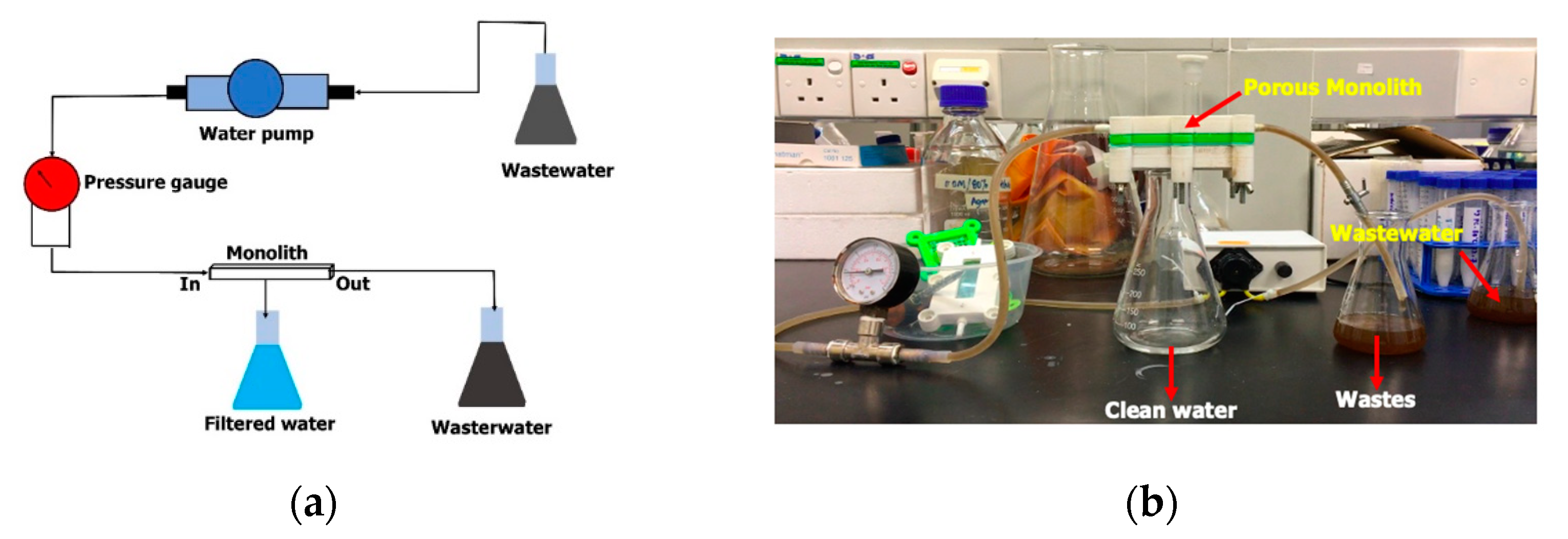

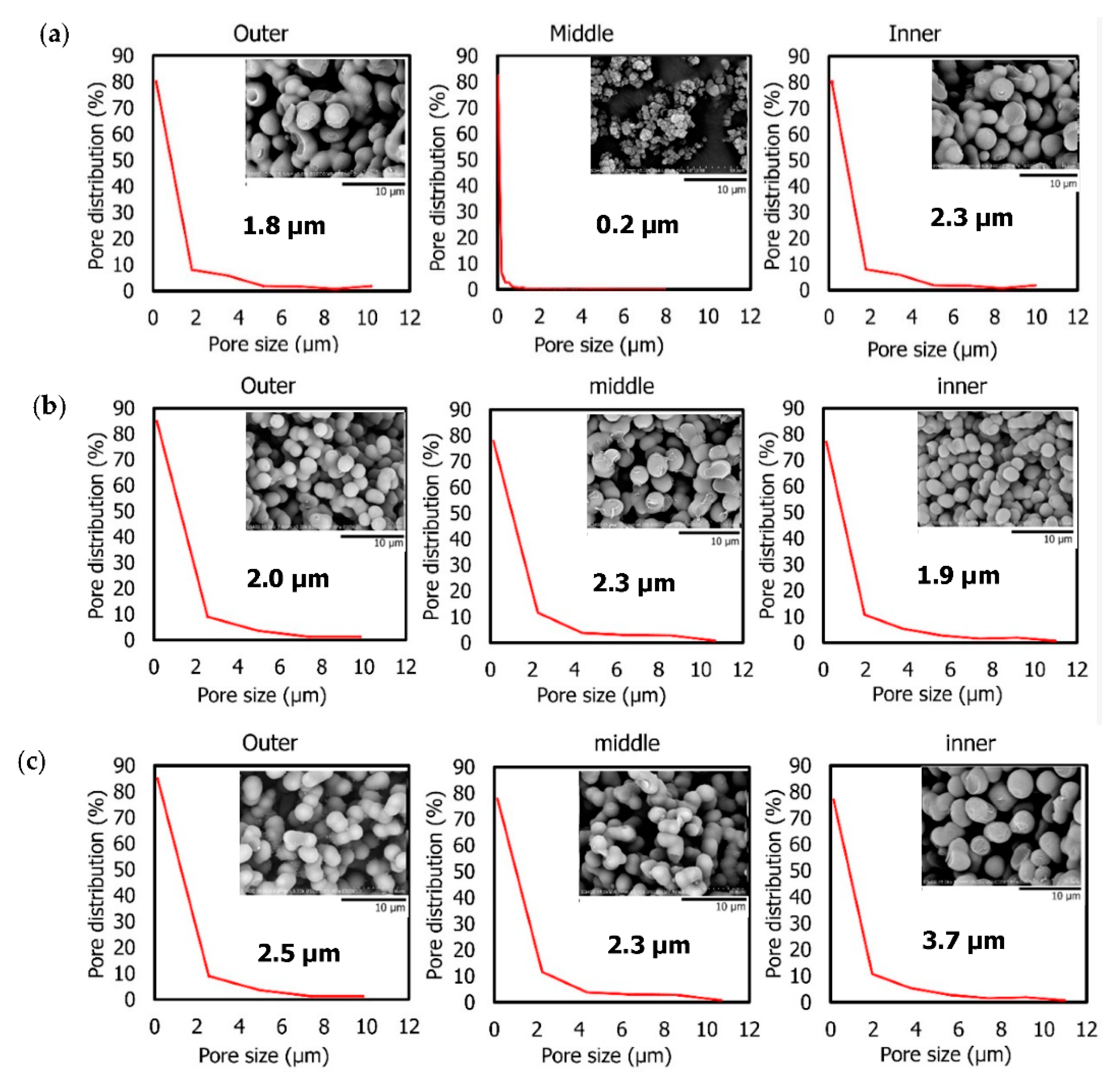
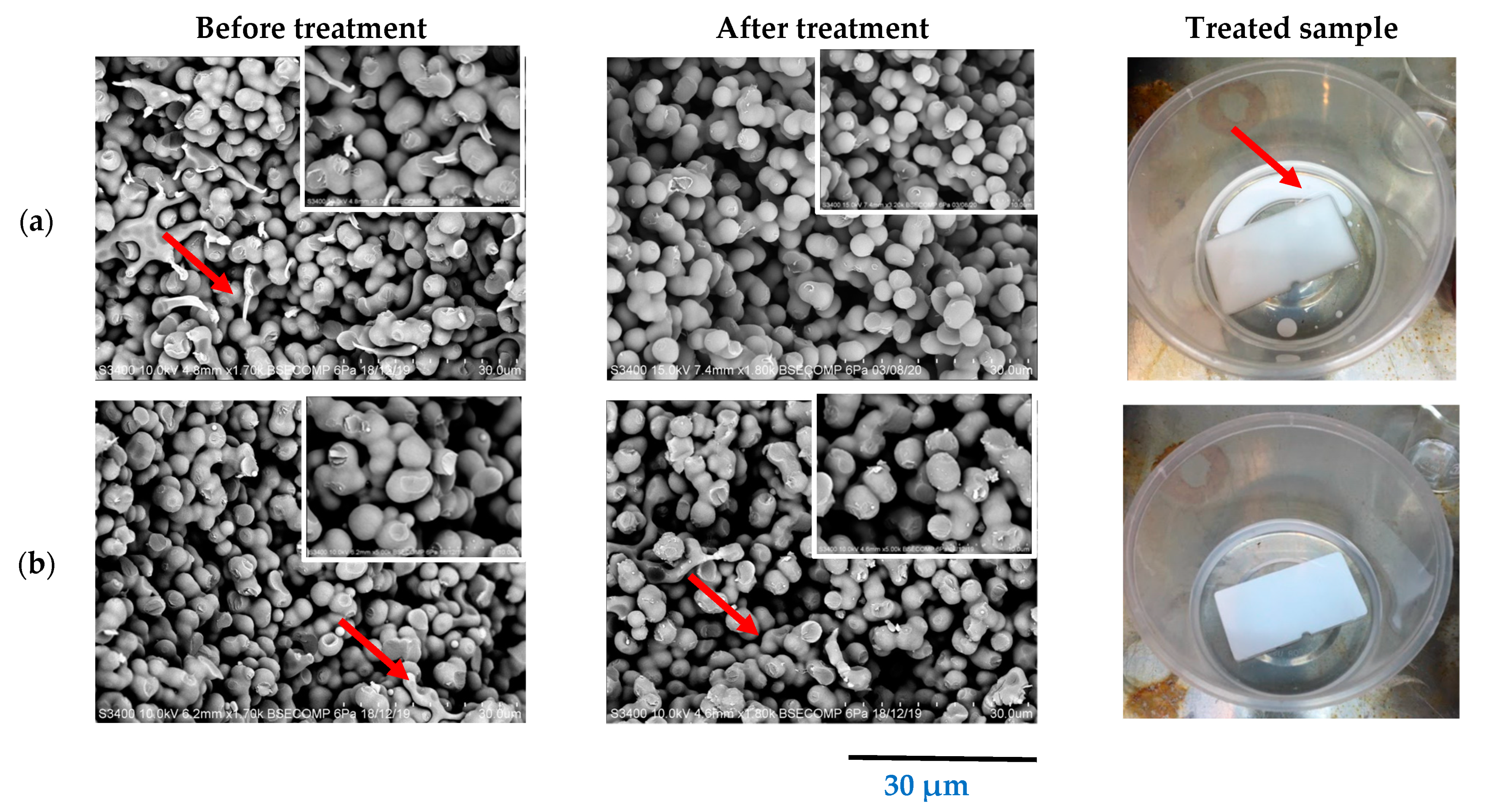
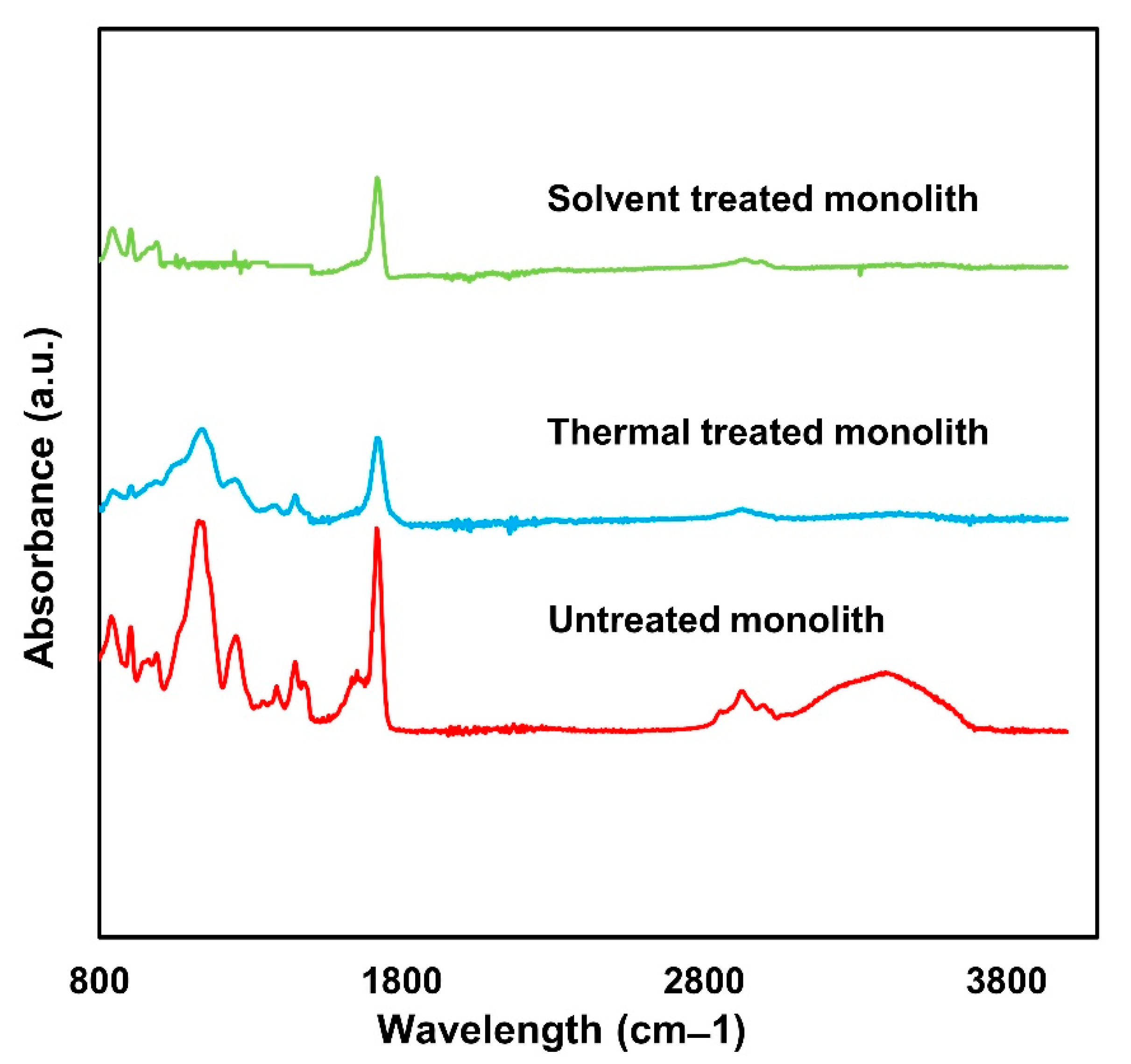
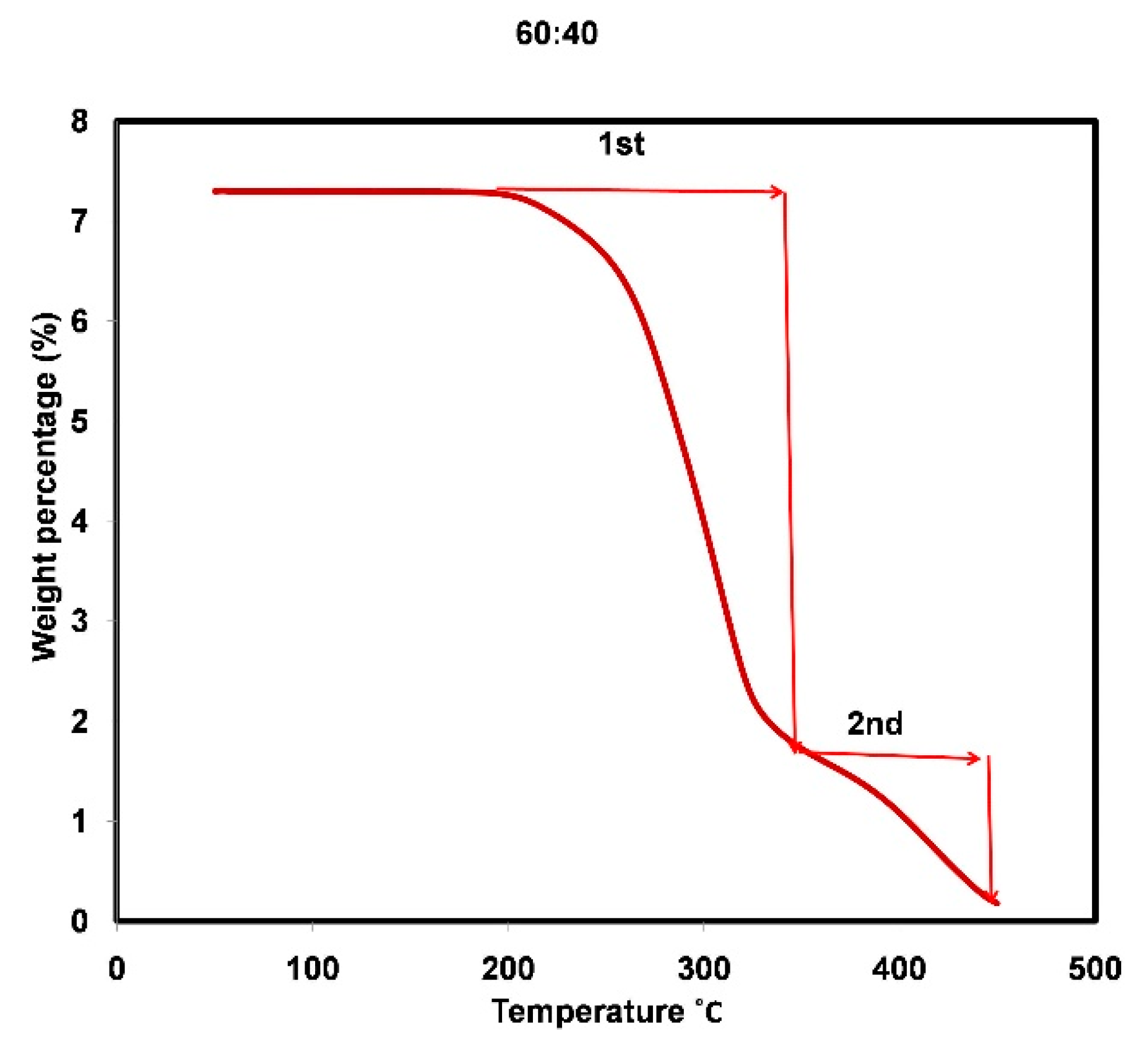

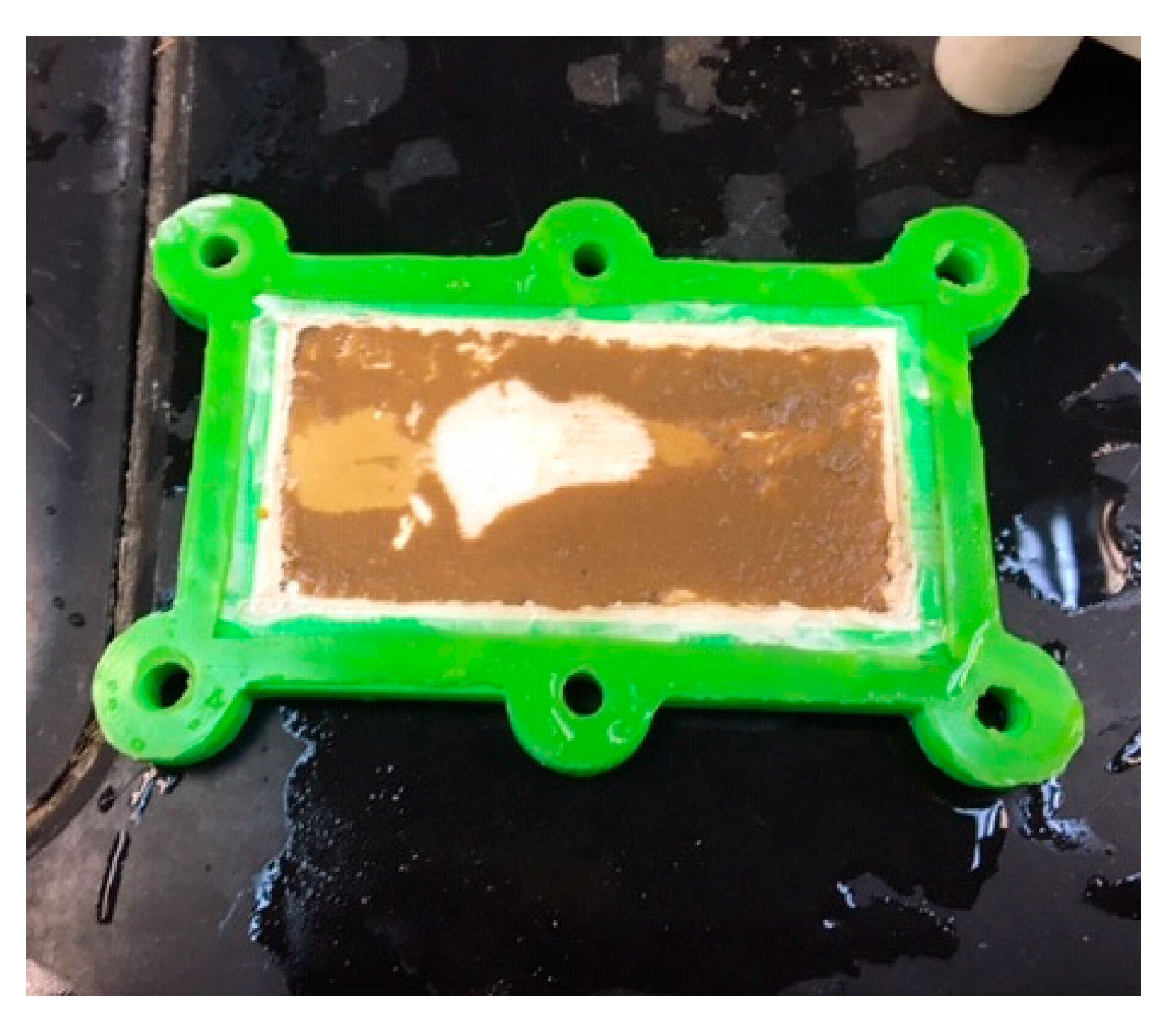
| Polymer Concentration (wt%) | Average Diameter (μm) | Polydispersity Index (PDI) |
|---|---|---|
| 10 | 0.9 | 0.537 |
| 20 | 2.4 | 0.932 |
| 30 | 2.7 | 0.999 |
| 40 | 3.4 | 0.917 |
| Water Quality | Animal Pond Wastewater | Laboratory Wastewater | ||
|---|---|---|---|---|
| before | after | before | after | |
| Color | Dark brown | Clear | White | Clear |
| Presence of particulate matter | Yes | No | Yes | No |
| pH | 8.8 | 8.9 | 8.8 | 8.9 |
| Turbidity (mg/L) | 80.7 | 2.69 | >1000 | 0.91 |
| Total suspended solid (mg/L) | 52.00 | 1.60 | 662.0 | 0.50 |
Publisher’s Note: MDPI stays neutral with regard to jurisdictional claims in published maps and institutional affiliations. |
© 2021 by the authors. Licensee MDPI, Basel, Switzerland. This article is an open access article distributed under the terms and conditions of the Creative Commons Attribution (CC BY) license (https://creativecommons.org/licenses/by/4.0/).
Share and Cite
Ibadat, N.F.; Saallah, S.; Ongkudon, C.M.; Misson, M. Preparation of Polystyrene Microsphere-Templated Porous Monolith for Wastewater Filtration. Materials 2021, 14, 7165. https://doi.org/10.3390/ma14237165
Ibadat NF, Saallah S, Ongkudon CM, Misson M. Preparation of Polystyrene Microsphere-Templated Porous Monolith for Wastewater Filtration. Materials. 2021; 14(23):7165. https://doi.org/10.3390/ma14237165
Chicago/Turabian StyleIbadat, Nur Faezah, Suryani Saallah, Clarence M. Ongkudon, and Mailin Misson. 2021. "Preparation of Polystyrene Microsphere-Templated Porous Monolith for Wastewater Filtration" Materials 14, no. 23: 7165. https://doi.org/10.3390/ma14237165
APA StyleIbadat, N. F., Saallah, S., Ongkudon, C. M., & Misson, M. (2021). Preparation of Polystyrene Microsphere-Templated Porous Monolith for Wastewater Filtration. Materials, 14(23), 7165. https://doi.org/10.3390/ma14237165






